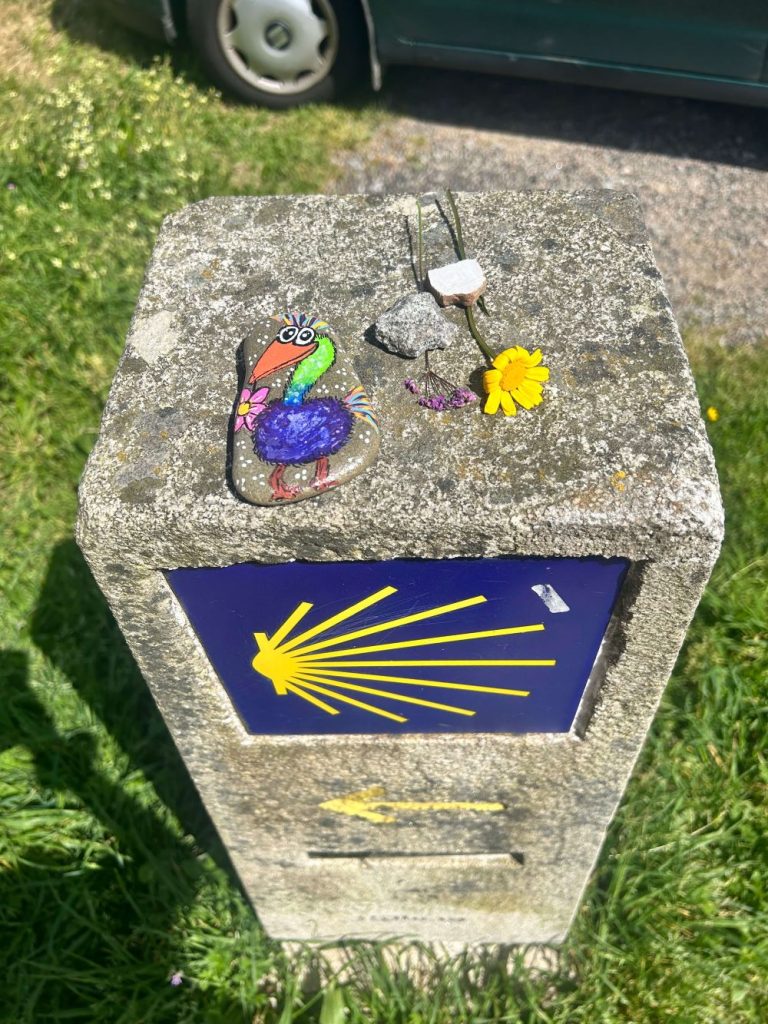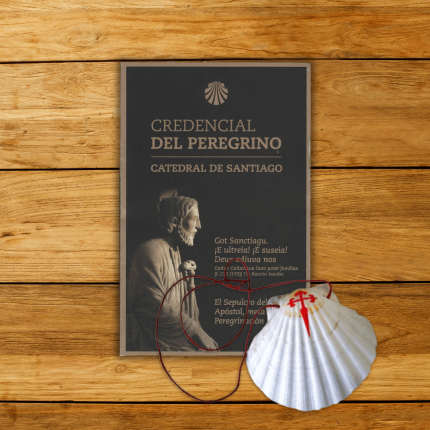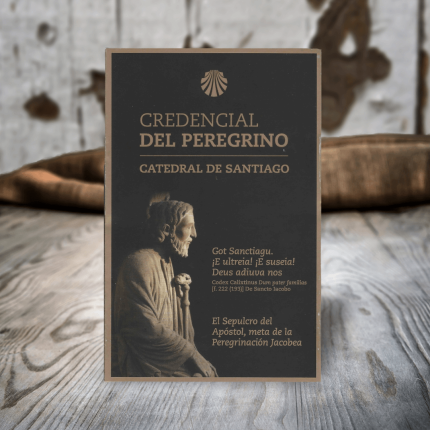The Tradition of Stones on the Camino de Santiago: Between the Symbolic and the Contemporary

If you've ever walked the Camino Camino de Santiago, you've probably noticed the little stones on the Way, piled on top of the milestones, crosses or other symbolic points along the route. At first glance, they seem like curious details, almost invisible in the middle of the landscape. But for many pilgrims, each stone has a profound meaning.
This gesture of leaving a stone may seem simple, but it raises an interesting question: is it an ancient tradition or a more recent phenomenon? The answer, like so many on the Camino, lies between the past and the present, between ancient rituals and the new meanings that each pilgrim constructs.
We would like to thank all the members of our community who shared their vision and helped to compose the content of this article. It is in the encounter of experiences that the Way is enriched.
What you'll find in this article:
- The ancestral roots of the tradition of leaving stones
- The places where this gesture has real historical weight
- The emotional and spiritual significance of the stone for pilgrims
- The symbolic impact of this collective gesture on today's Camino
- A thought: are you taking a stone with you?
1. A Practice with Ancestral Roots
Placing stones in sacred or symbolic places is an ancient practice, present in many cultures and religions:
- In Judaism, placing a stone on a grave is a sign of respect and lasting memory; the stone remains, as a symbol of a memory that cannot be erased.
- On mountain trails, travelers left stones to mark their passage, guiding those who followed.
- In Celtic and Roman traditions, cairns (mounds of stones) were used to mark places of spiritual transition or as offerings to protective deities.
On the Camino de Santiago, these gestures have found fertile ground and have been reinterpreted over the centuries, but not all the places where stones are piled up today have ancient roots.
In fact, the practice of leaving stones at the top of mile markers only seems to have gained expression in recent years, in line with the growth in the number of pilgrims and the sharing of symbolism on social media. Although it is charged with intention, it is a more contemporary manifestation, often inspired by other places on the Way with a much older history.

2. Places of Real Historical Significance
There are, however, places where the gesture of leaving a stone has deeper roots. On the French Way, the most emblematic site is the Iron Cross (Cruz de Hierro), where, since ancient times, pilgrims have deposited stones brought from home, in a gesture of symbolic surrender, liberation or gratitude. The origin of this custom possibly dates back to pre-Roman rituals or offerings made to Mercury, the god who protected travelers.
On the Portuguese Way, the place called O Milladoiro stands out, about 7 km from Santiago de Compostela. The name derives from "humilladoiro" and refers to the point where pilgrims first saw the holy city. When they got there, many would kneel down or leave a stone as a sign of respect, as if to say: "I made it."
In these places, unlike generic landmarks, the gesture is ancient, full of history and spirituality.

3. Little Stones on the Way - Between Burden and Prayer
Even though many of today's gestures don't originate from a formal ritual, the act of leaving a stone is still deeply symbolic. Many pilgrims carry a stone with them from the start of their journey, or even from home, as a way of representing something they want to leave behind.
The stone can symbolize:
- Pain
- Guilt
- Fear
- A heavy thought
- A silent prayer
- A loved one
- An intention
- A thank you
- A request
- A fresh start
For some, it is an intimate gesture of liberation. The stone becomes a physical burden that represents an emotional weight. Carrying it for kilometers is almost a process of inner digestion, until the right moment comes to let it go. When they finally put it down, they do so with awareness: they leave behind what no longer serves them in order to move on lighter, in body, mind and heart.
For others, it's a prayer without words. It's a way of walking for someone: for the departed, for those who are suffering, for those who can't walk. In this case, leaving the stone is an act of faith, a discreet gesture but full of intention.
"I walk for myself, but also for you."
Some people choose their stone carefully. Some keep it for days. Those who carry it in their pocket, backpack or even in their hand, as if it were an extension of what they carry inside.
That's why it's not uncommon to see pilgrims stopping in silence, taking a deep breath, closing their eyes before leaving the stone.
It's more than a gesture. It's a moment. A transition. A commitment to oneself.
And in the midst of the stone's simplicity, there is an immense symbolic force: that of accepting the past, embracing the present and making room for what comes next.
4. A Silent Community
Regardless of the historical origin of each gesture, there is something powerful about seeing hundreds of small stones piled up along the path. Each one represents a story. Each one is a silent testimony that someone has passed that way, with faith, with hope, with a purpose.
Seeing these stones makes us feel part of something bigger: an invisible community, made up of footsteps, stories and intentions left along the Way.
Even so, it's important that this symbolic gesture is made with awareness. In places where the gesture has no traditional roots, excessive accumulation can have an environmental impact or even distort the experience of the place. As with everything on the Camino, a balance between personal intention and respect for the whole is essential.
5. What about you? Will You Take Your Stone?
Each pilgrim walks the Way in his or her own way. The stone you carry can be light or heavy, visible or invisible. But the most important thing is to know why you're carrying it, and what you'll leave behind when you lay it down.
Perhaps the greatest tradition of the Way is not in the gestures we repeat, but in the way we fill them with meaning.
Best-selling products
-
Portuguese Coastal Path Guide - PRE SALE
22,00 € -
Credential Kit + Pilgrim's Shell
10,00 € -
Pilgrim Credential
5,00 € -
My First Path" kit
The original price was €32.00.27,00 €The current price is: €27.00. -
2026 Desk Calendar - PRE SALE
10,00 €





